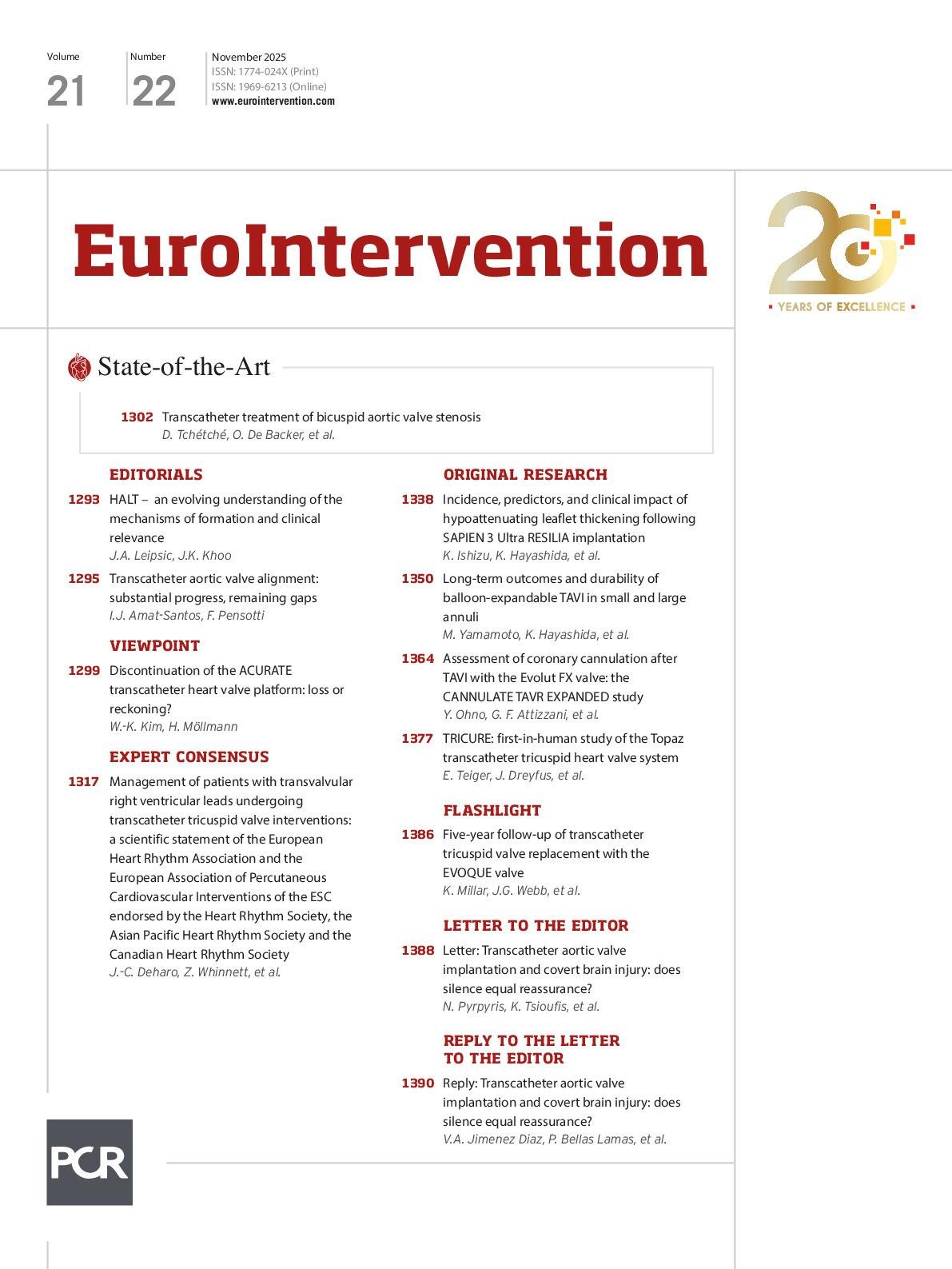Abstract
Background: Evidence regarding the long-term outcomes and durability of balloon-expandable transcatheter heart valves (BE-THVs) after transcatheter aortic valve implantation (TAVI) is still scarce.
Aims: This study evaluates these outcomes and further examines their association with the annular size in patients.
Methods: A total of 2,699 patients who had undergone TAVI with a BE-THV at least 5 years prior to our study were analysed. A small aortic annulus (SAA) was defined as an area ≤430 mm2; any larger annuli were labelled large aortic annuli (LAA). The primary endpoints were the incidence of all-cause mortality and bioprosthetic valve failure (BVF) between the SAA and LAA groups. As a subanalysis, the primary endpoints were examined in relation to postprocedural mean pressure gradient (mPG) ≥20 mmHg, severe prosthesis-patient mismatch (PPM), and sex differences, comparing SAA and LAA each time.
Results: Overall, 66.4% (n=1,793) of patients were categorised into the SAA group. At 7 years after TAVI, the cumulative all-cause mortality showed differences between the SAA and LAA groups (55.2% vs 58.6%), while BVF assessed by Gray’s test was similar between the groups (3.3% vs 2.7%). The Cox multivariable analysis revealed no association between SAA and worse prognosis (hazard ratio 1.07, 95% confidence interval: 0.85-1.36; p=0.56). There were no significant differences in mortality or BVF regarding an mPG ≥20 mmHg, severe PPM, or sex between the SAA and LAA groups (allp>0.05).
Conclusions: Annular size differences were not found to influence long-term outcomes or valve durability following TAVI with a BE-THV, suggesting that other factors warrant further investigation.
Sign up for free!
Join us for free and access thousands of articles from EuroIntervention, as well as presentations, videos, cases from PCRonline.com

